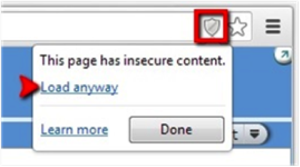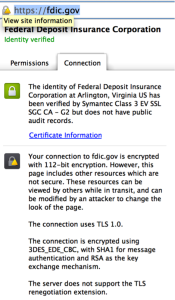[Full disclosure I work at Google, I do not speak for the Chrome team, and more generically am not speaking for my employer in this or any of my posts here]
Recently Melih did a blog post on the topic of browser trust indicators. In this post he makes the argument that DV certificates should not receive any positive indicator in the browser user interface.
I agree with him, just not for the same reasons. Positive trust indicators largely do not work and usability studies prove that is true. Browsers introduced the “lock” user interface indicator as part of a set of incentives and initiatives intending to encourage site operators to adopt SSL.
What is important is that these efforts to encrypt the web are actually working, over half the web is now encrypted and more importantly the adoption rate is demonstrating hockey stick growth.
As a result, in 2014 Chrome started down the path of deprecating positive trust indicators all together. In-fact today Chrome already marks HTTP pages as “Not secure” if they have password or credit card fields.
The eventual goal being able to mark all HTTP pages as insecure but for this to happen SSL adoption needs to be much higher, I suspect browsers will want to see adoption in the 90% to 95% range before they are willing to make this change.
This is relevant in this case because if all pages are encrypted what value does a positive trust indicator have? None. This means that when all HTTP pages get marked “Not secure” we will probably see the lock icon disappear.
So, as I said, I agree with Mehli, the “Secure” indicator should go away but so should the lock, the question is not if, but when.
But what does that mean for EV trust indicators? I am a member of a small group, a group that thinks that EV certificates can provide value. With that said today EV certificates have some major shortcomings wich significantly limit their value, some of which include:
- It is not possible to get an EV wildcard certificate,
- CAs, largely, have ignored automation for EV certificates,
- Due to the lack of automation EV certificates are long lived and their keys more susceptible to theft as a result,
- The vetting processes used in the issuance of EV certificates are largely manual making them expensive and impractical to use in many cases,
- CAs market them as an antiphishing tool when there are no credible studies that support that,
- The business name in the certificate is based on the legal name of the entity, not the name they do business under (DBA),
- The business address details in the certificate are based on where business is registered (e.g. Delaware),
- There is no contact information in the certificate, short of the taxation address, that a user can use to reach someone in case of an issue.
Addressing these issues have either been actively been resisted by CAs, for example, DigiCert has tried to get EV wildcard certificates to be a thing in the CA/Browser Forum a number of times but CAs have voted against it every time, or simply ignored.
There are some people who are working towards addressing these gaps, for example, the folks over at CertSimple but without CAs taking a leading role in redefining the EV certificate the whole body of issues can nott be resolved. Importantly until that happens you won’t see browsers even considering updates to the EV UI.
Given this reality, browsers have slowly been minimizing the details shown in EV certificates since they can give users the wrong impression and have limited value given the contents of the certificate.
It is my belief that unless the CAs work together to address the above systematic issues in EV certificates that minimization will continue and when the web is “encrypted” it won’t just be DV that loses its positive trust indicator, it will be EV also.


